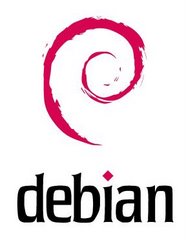Yeni websayfa ve blog adresim www.kayadelen.com da bulunmaktadır.
My new webpage and blog avaible on www.kayadelen.com
Pazartesi, Şubat 02, 2009
Cumartesi, Aralık 29, 2007
Cisco'dan Yeni Güvenlik Mimarisi
TrustSec olarak adlandırılan yeni nesil güvenlik yöntemini tanıtan Cisco, yıllardır kullandığı Self Defending Networks mimarisinin yerini alacak.
Toplam 6 yıl boyunca Self Defending Networks (Kendini koruyabilen ağlar) mimarisi ile birlikte, büyük çaplı kurumsal ağların güvenliğini sağlayan Cisco ürünleri dünyada en çok tercih edilen marka haline gelmiştir. Kendini koruyabilen ağların mimarisinin 6 yıl öncesine göre çok daha komplike ama daha sistemli çalışan kurumsal ağlara göre optimize edilerek daha güvenli bir ağ oluşması sağlanmış.
TrustSec isimli bu yeni mimari, en küçük detayına ve uygulamasına kadar otomatik algılayıp buna göre ayarlama yapılabiliyor. İşyerinizdeki departmanların ve kişilerin yetkilerinin de çok daha farklı bir şekilde, belki de Windows sunucularında bulunan 'Active Directory' şeklinde bir yapıyla kontrol edilebiliyor olması ve bunun ağ katmanı üzerinden yapılması oldukça güvenli ağlara adım atılmasını sağlıyor.
Dolayısıyla başlıkta belirttiğimiz gibi güvenlik konusunda yeni bir çağ başlıyor. Ama bu işin güzel kısmı... Bir de bu yeni teknolojiyi kullanabilecek eğitimi almış olmanız da gerekiyor. Hemen olmasa da kısa süre içinde yaygınlaşacak olan TrustSec için muhtemelen Cisco'nun ünlü sertifika programlarına bir düzine daha eklenecektir. Bu da tabii oldukça yüksek fiyatlar ödenerek geçilmesi gereken zorlu sınavlar demek. Şimdiden bu sınavlara girecek olanlara bol şans!
Toplam 6 yıl boyunca Self Defending Networks (Kendini koruyabilen ağlar) mimarisi ile birlikte, büyük çaplı kurumsal ağların güvenliğini sağlayan Cisco ürünleri dünyada en çok tercih edilen marka haline gelmiştir. Kendini koruyabilen ağların mimarisinin 6 yıl öncesine göre çok daha komplike ama daha sistemli çalışan kurumsal ağlara göre optimize edilerek daha güvenli bir ağ oluşması sağlanmış.
TrustSec isimli bu yeni mimari, en küçük detayına ve uygulamasına kadar otomatik algılayıp buna göre ayarlama yapılabiliyor. İşyerinizdeki departmanların ve kişilerin yetkilerinin de çok daha farklı bir şekilde, belki de Windows sunucularında bulunan 'Active Directory' şeklinde bir yapıyla kontrol edilebiliyor olması ve bunun ağ katmanı üzerinden yapılması oldukça güvenli ağlara adım atılmasını sağlıyor.
Dolayısıyla başlıkta belirttiğimiz gibi güvenlik konusunda yeni bir çağ başlıyor. Ama bu işin güzel kısmı... Bir de bu yeni teknolojiyi kullanabilecek eğitimi almış olmanız da gerekiyor. Hemen olmasa da kısa süre içinde yaygınlaşacak olan TrustSec için muhtemelen Cisco'nun ünlü sertifika programlarına bir düzine daha eklenecektir. Bu da tabii oldukça yüksek fiyatlar ödenerek geçilmesi gereken zorlu sınavlar demek. Şimdiden bu sınavlara girecek olanlara bol şans!
Perşembe, Aralık 20, 2007
NetBSD 4.0 sürümü çıktı
NetBSD 4.0 de gelen esas değişim ZEN 3 sanal sunucu, bluetooth, yeni donanım sürücüleri ve ARM, PowerPC and MIPS işlemci desteğidir.
NetBSD 4.0 da olan değişiklikler için resmi sürüm duyuru bağlantısını aşağıdadır.
http://www.netbsd.org/releases/formal-4/NetBSD-4.0.html [netbsd.org]
Major Changes Between 3.0 and 4.0
The complete list of changes can be found in the CHANGES and CHANGES-4.0 files in the top level directory of the NetBSD 4.0 release tree. Some highlights include:
Networking
* agr(4): new pseudo-device driver for link level aggregation.
* IPv6 support was extended with an RFC 3542-compliant API and added for gre(4) tunnels and the tun(4) device.
* An NDIS-wrapper was added to use Windows binary drivers on the i386 platform, see ndiscvt(8).
* The IPv4 source-address selection policy can be set from a number of algorithms. See "IPSRCSEL" in options(4) and in_getifa(9).
* Imported wpa_supplicant(8) and wpa_cli(8). Utilities to connect and handle aspects of 802.11 WPA networks.
* Imported hostapd(8). An authenticator for IEEE 802.11 networks.
* carp(4): imported Common Address Redundancy Protocol to allow multiple hosts to share a set of IP addresses for high availability / redundancy, from OpenBSD.
* ALTQ support for the PF packet filter.
* etherip(4): new EtherIP tunneling device. It's able to tunnel Ethernet traffic over IPv4 and IPv6 using the EtherIP protocol specified in RFC 3378.
* ftpd(8) can now run in standalone mode, instead of from inetd(8).
* tftp(1) now has support for multicast TFTP operation in open-loop mode, server is in progress.
* tcp(4): added support for RFC 3465 Appropriate Byte Counting (ABC) and Explicit Congestion Notification as defined in RFC 3168.
File systems
* scan_ffs(8), scan_lfs(8): utilities to find FFSv1/v2 and LFS partitions to recover lost disklabels on disks and image files.
* tmpfs: added a new memory-based file system aimed at replacing mfs. Contrary to mfs, it is not based on a disk file system, so it is more efficient both in overall memory consumption and speed. See mount_tmpfs(8).
* Added UDF support for optical media and block devices, see mount_udf(8). Read-only for now.
* NFS export list handling was changed to be filesystem independent.
* LFS: lots of stability improvements and new cleaner daemon. It is now also possible to use LFS as root filesystem.
* vnd(4): the vnode disk driver can be used on filesystems such as smbfs and tmpfs.
* Support for System V Boot File System was added, see newfs_sysvbfs(8) and mount_sysvbfs(8).
Drivers
*
Audio:
o Support for new models on drivers such as Intel ICH8/6300ESB, NVIDIA nForce 3/4, etc.
o Added support for AC'97 modems.
NetBSD 4.0 da olan değişiklikler için resmi sürüm duyuru bağlantısını aşağıdadır.
http://www.netbsd.org/releases/formal-4/NetBSD-4.0.html [netbsd.org]
Major Changes Between 3.0 and 4.0
The complete list of changes can be found in the CHANGES and CHANGES-4.0 files in the top level directory of the NetBSD 4.0 release tree. Some highlights include:
Networking
* agr(4): new pseudo-device driver for link level aggregation.
* IPv6 support was extended with an RFC 3542-compliant API and added for gre(4) tunnels and the tun(4) device.
* An NDIS-wrapper was added to use Windows binary drivers on the i386 platform, see ndiscvt(8).
* The IPv4 source-address selection policy can be set from a number of algorithms. See "IPSRCSEL" in options(4) and in_getifa(9).
* Imported wpa_supplicant(8) and wpa_cli(8). Utilities to connect and handle aspects of 802.11 WPA networks.
* Imported hostapd(8). An authenticator for IEEE 802.11 networks.
* carp(4): imported Common Address Redundancy Protocol to allow multiple hosts to share a set of IP addresses for high availability / redundancy, from OpenBSD.
* ALTQ support for the PF packet filter.
* etherip(4): new EtherIP tunneling device. It's able to tunnel Ethernet traffic over IPv4 and IPv6 using the EtherIP protocol specified in RFC 3378.
* ftpd(8) can now run in standalone mode, instead of from inetd(8).
* tftp(1) now has support for multicast TFTP operation in open-loop mode, server is in progress.
* tcp(4): added support for RFC 3465 Appropriate Byte Counting (ABC) and Explicit Congestion Notification as defined in RFC 3168.
File systems
* scan_ffs(8), scan_lfs(8): utilities to find FFSv1/v2 and LFS partitions to recover lost disklabels on disks and image files.
* tmpfs: added a new memory-based file system aimed at replacing mfs. Contrary to mfs, it is not based on a disk file system, so it is more efficient both in overall memory consumption and speed. See mount_tmpfs(8).
* Added UDF support for optical media and block devices, see mount_udf(8). Read-only for now.
* NFS export list handling was changed to be filesystem independent.
* LFS: lots of stability improvements and new cleaner daemon. It is now also possible to use LFS as root filesystem.
* vnd(4): the vnode disk driver can be used on filesystems such as smbfs and tmpfs.
* Support for System V Boot File System was added, see newfs_sysvbfs(8) and mount_sysvbfs(8).
Drivers
*
Audio:
o Support for new models on drivers such as Intel ICH8/6300ESB, NVIDIA nForce 3/4, etc.
o Added support for AC'97 modems.
Salı, Aralık 18, 2007
How to retrieve Email via POP3 using Telnet
How to retrieve Email via POP3 using Telnet
1. Telnet into Exchange server hosting IMS service using TCP port 110.
Command is telnet 110
2. Turn on local echo on your telnet client so that you can see what you are typing.
On Win 9x and NT 3.5/4.0 Telnet client this done by selecting the "preferences" from the "terminal" pull down menu, and checking the local echo radio button. For Windows 2000 telnet client, issue command "set local_echo", from the telnet command prompt.
3. After performing step 1 the terminal window text should appear as follows
+OK Microsoft Exchange POP3 server version 5.5.2653.23 ready
4. Issue the following command sequence.
user\\
pass
note: Since local echo has been set, your password will appear on the telnet terminal window in plain text.
list
Displays a list of email messages
retr
Displays a specific message in the telnet terminal window
dele
Deletes a specific message
Quit
Closes telnet session
1. Telnet into Exchange server hosting IMS service using TCP port 110.
Command is telnet
2. Turn on local echo on your telnet client so that you can see what you are typing.
On Win 9x and NT 3.5/4.0 Telnet client this done by selecting the "preferences" from the "terminal" pull down menu, and checking the local echo radio button. For Windows 2000 telnet client, issue command "set local_echo", from the telnet command prompt.
3. After performing step 1 the terminal window text should appear as follows
+OK Microsoft Exchange POP3 server version 5.5.2653.23 ready
4. Issue the following command sequence.
user
pass
note: Since local echo has been set, your password will appear on the telnet terminal window in plain text.
list
Displays a list of email messages
retr
Displays a specific message in the telnet terminal window
dele
Deletes a specific message
Quit
Closes telnet session
Pazar, Aralık 16, 2007
Telnet Session with IMAP
telnet server imap
. LOGIN username "password"
. LIST "" "*"
. EXAMINE INBOX.test
. FETCH 1 all
. FETCH 1 fast
. CLOSE
. LOGOUT
. LOGIN username "password"
. LIST "" "*"
. EXAMINE INBOX.test
. FETCH 1 all
. FETCH 1 fast
. CLOSE
. LOGOUT
Cumartesi, Aralık 15, 2007
Send Email via Telnet
You do/type this Server responds with
Telnet to hostname on port 25
220 (then identifies itself - possibly with several lines of 220 + text)
HELO your_domain_name or whatever
250 (followed by human readable message)
MAIL FROM:you@hostname.com (ie, your email address)
250 is syntactically correct (or similar)
RCPT TO:them@someplace_else.com (email address you want to send to)
250 is syntactically correct
DATA Tells you to send data then CRLF period CRLF at end
You type your message then CRLF period CRLF (ie, type a period on a line by itself then hit ENTER) 250
QUIT Signoff message
Telnet to hostname on port 25
220 (then identifies itself - possibly with several lines of 220 + text)
HELO your_domain_name or whatever
250 (followed by human readable message)
MAIL FROM:you@hostname.com (ie, your email address)
250 is syntactically correct (or similar)
RCPT TO:them@someplace_else.com (email address you want to send to)
250 is syntactically correct
DATA Tells you to send data then CRLF period CRLF at end
You type your message then CRLF period CRLF (ie, type a period on a line by itself then hit ENTER) 250
QUIT Signoff message
Cumartesi, Kasım 03, 2007
İnternet bankacılığı farelerine rekor ceza
ANKARA(ANKA)- Yargıtay, internet banka hesapları üzerinden yapılan dolandırıcılığa teşebbüs halinde kalmasına rağmen ağır ceza verilmesine karar verdi. Yargıtay 11. Ceza Dairesi, sahte bir banka hesabına internet ortamında şifre kırarak EFT yapmaya çalışan sanığın 'Bilişim sistemindeki verileri değiştirmek suretiyle haksız menfaat elde etme' suçundan mahkum edilmesi gerektiğine hükmetti.
Yargıtay'ın verdiği emsal karar sonrası, internet ortamında şifre kırarak banka hesaplarına girenler 6 yıla kadar hapis cezası istemiyle yargılanıp hüküm giyecek. İstanbul 5. Ağır Ceza Mahkemesi'nin verdiği kararı bozan Yargıtay 11. Ceza Dairesi, internet ortamında şifre kırarak EFT yapan sanığın 'Nitelikli dolandırıcılığa teşebbüs' suçundan değil, 'Bilişim sistemindeki verileri değiştirmek suretiyle haksız menfaat elde etmek' suçundan yargılanıp hüküm giymesi gerektiğine karar verdi.
Yargıtay 11. Ceza Dairesi'nin emsal kararında şöyle denildi:
'Bilişim sistemindeki verileri değiştirmek suretiyle haksız menfaat elde edilmesi suçunun sanık tarafından şikayetçi şirketin hesabından sahte olduğu hesaba intikali anında tamamlandığı gözetilmeyerek eylemin teşebbüs aşamasında kaldığından bahisle eksik ceza tayini aleyhe temyiz olmadığından bozma sebebi sayılmamıştır. Sanık L.K. un yapılan yargılaması sonunda: nitelikli dolandırıcılığa teşebbüs suçunun değişen vasfına göre ?Bilişim Sistemindeki Verilen Değiştirmek Suretiyle Haksız Menfaat Elde Etmek' ve resmi belgede sahtecilik suçlarından yargılanması gerektiği bozma nedeni sayılmıştır'
Yargıtay'ın verdiği emsal karar sonrası, internet ortamında şifre kırarak banka hesaplarına girenler 6 yıla kadar hapis cezası istemiyle yargılanıp hüküm giyecek. İstanbul 5. Ağır Ceza Mahkemesi'nin verdiği kararı bozan Yargıtay 11. Ceza Dairesi, internet ortamında şifre kırarak EFT yapan sanığın 'Nitelikli dolandırıcılığa teşebbüs' suçundan değil, 'Bilişim sistemindeki verileri değiştirmek suretiyle haksız menfaat elde etmek' suçundan yargılanıp hüküm giymesi gerektiğine karar verdi.
Yargıtay 11. Ceza Dairesi'nin emsal kararında şöyle denildi:
'Bilişim sistemindeki verileri değiştirmek suretiyle haksız menfaat elde edilmesi suçunun sanık tarafından şikayetçi şirketin hesabından sahte olduğu hesaba intikali anında tamamlandığı gözetilmeyerek eylemin teşebbüs aşamasında kaldığından bahisle eksik ceza tayini aleyhe temyiz olmadığından bozma sebebi sayılmamıştır. Sanık L.K. un yapılan yargılaması sonunda: nitelikli dolandırıcılığa teşebbüs suçunun değişen vasfına göre ?Bilişim Sistemindeki Verilen Değiştirmek Suretiyle Haksız Menfaat Elde Etmek' ve resmi belgede sahtecilik suçlarından yargılanması gerektiği bozma nedeni sayılmıştır'
Kaydol:
Kayıtlar (Atom)



